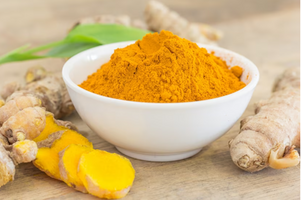
What is Rheumatoid Arthritis?
Rheumatoid Arthritis is a painful medical condition affecting men, women, and children alike all over the globe. It is mainly a musculoskeletal condition that affects the joints until eventually progressing to the joints present in fingers, knees, shoulders, ankles, elbows, etc.
Its effect can vary from individual to individual, ranging from passable pain to severe discomfort. Apart from affecting joints, rheumatoid arthritis can also cause other health problems like inflammation of the blood vessels, lungs, and other crucial organs.
Ayurveda has always been at the forefront of tackling this condition even before science poured in all of its research-driven efforts into alleviating the symptoms of Rheumatoid arthritis once and for all. It is safe to presume that many strides that modern science has made against rheumatoid arthritis have been successful thanks to the groundwork laid out for it by Ayurveda.
Ayurveda, with the help of diet and lifestyle recommendations, has proven to reduce inflammation and other symptoms of rheumatoid arthritis quite effectively. So in this article, we will look at rheumatoid arthritis from the perspective of Ayurveda, understand the insights it has to share, and how it can effectively help us find respite from this often agonizing and discomforting health condition.
Must know Facts about Rheumatoid Arthritis
- Although rheumatoid arthritis can affect men and women alike, the risk is at least three times higher in women.
- Rheumatoid arthritis conditions are more common in industrial areas
- The disease can primarily occur between the ages of 35 to 50
- Joint swelling, redness, stiffness, and tenderness of the joints can be determining signals of one having rheumatoid arthritis.
The Ayurvedic Approach to Rheumatoid Arthritis
Ayurveda identifies a variety of forms pertaining to rheumatoid arthritis, and as such also prescribes an array of herbal and physical remedial solutions to overcome the condition. In fact, there are only two forms of arthritis present today that cannot be cured by Ayurveda too.
According to Ayurveda, rheumatoid arthritis-like any other disease in its context arises as a result of disturbed energy balances in the body. We are of course talking about the doshic imbalances that may creep up in the body and cause an uprising of several diseases.
The types of arthritic conditions affecting the body are defined as Amavas in Ayurveda. The basic idea is that toxins in the body aka ama get carried throughout the body due to the moving energy of Vata. This circulating ama eventually gets accumulated on the tissues as a somewhat sticky layer.
When Vata is imbalanced, the toxins get circulated throughout our body. As a result, the magnets evenly transmitted throughout the body, eventually getting accumulated around the tissues, mainly the joints.
The formation of toxins itself can be attributed to improper digestion. Poor digestion is a result of pitta imbalance. When food is not digested properly, the remaining residue can rot within our system and release poisonous toxins that can wreak havoc on our health. These released toxins are later transmitted throughout the body via blood circulation, which can result in the impairing of our metabolism, cells not receiving enough nourishment, and tissue damage.
The Kapha dosha, on the other hand, is responsible for controlling the fluids in our body and holds a lot of similarities with amadue to its liquid nature. If the kaphain our bodies are strengthened at a time when ama is at its height, it can get mixed with ama instead of providing nourishment to the joints, thus aggravating an already bad situation.
So as per the above insights, rheumatoid arthritis is caused due to the imbalances of the three doshas that dominate our mind and body. Arthritis can be vata, pitta, or Kapha. Recognizing the type of arthritis is therefore crucial for Ayurvedic practitioners to recommend an appropriate treatment.
The Type of Arthritis
1 – Treatment for arthritis of the Vata type
The vata type of arthritis can be identified by cutting pain. The pain is only aggravated by cold water and windy or rainy weather. This pain can be alleviated with the help of exposure to warm sun, or sauna.
The joints become stiff and movement becomes very challenging. The pain is mostly felt when moving. This pain can be accompanied by other symptoms such as anxiety, bloating, insomnia, nervousness, constipation, and severe back pain.
2 – Treatment for arthritis of the Pitta type
Pitta type arthritis is relatively acute and burning. It is exemplified by inflammation of the joints that can be identified by swelling, redness of the skin, and chills. The pain can aggravate with warmth and subside with cold. The joints can hurt even when resting. Other symptoms like sweating, diarrhea, and irritability are also common with this condition.
3 – Treatment for Arthritis of the Kapha Type
In Kapha Type Arthritis there is visible swelling in and around the joints. The joints can become tight and feel cold and damp. The pain can sometimes be severe and other times extremely dull. The pain can be aggravated with heat and relaxed with cold. Movement can help in significantly reducing the pain. Other symptoms that can accompany this condition are respiratory problems, increased secretion of mucous and oily skin.
Treatment for Rheumatoid Arthritis
Judging from everything we’ve learned so far about Rheumatoid arthritis, the prospect of eliminating toxins from the body while bringing balance to all the three doshas is the obvious solution to this problem. Ayurveda recommends different treatments pertaining to the type of arthritis you are suffering from.
Body purification can be achieved with the help of Panchakarma or Purvakarma. Apart from those solutions, diet, lifestyle changes, and yoga can all be combined together to take care of rheumatoid arthritis for good.
Treatment for Vata Type Arthritis
A Vata type arthritis diet is typically recommended to soothe Vata. You are recommended to stay away from cold drinks, salads, legumes, potatoes, tomatoes, corn, or barley when dealing with a Vata type arthritis.
Guggulu, thanks to its anti-inflammatory, detoxifying, and laxative properties can be recommended by your Ayurvedic practitioner to deal with Vata type arthritis. Appropriate Guggulu administration can lubricate and rejuvenate the joints. Other Ayurvedic herbs like haritaki can also be extremely beneficial with joint paint when dealing with Vata type arthritis.
Treatment for Pitta Type Arthritis
A pitta type arthritis diet is typically recommended to soothe pitta. You are recommended to stay away from yogurt, spinach, tomatoes, hot and spicy food when dealing with this type of arthritis. Guggulu or Amalaki can both be extremely beneficial herbs to help deal with pitta type arthritis.
Ayurveda also recommends the use of coconut oil or castor oil to relieve pain in affected joints. Additionally a paste made of sandalwood and water applied to the affected areas can also have a substantial soothing effect.
Treatment for Kapha Type Arthtritis
A Kapha type arthritis is typically recommended to pacify Kapha imbalance. You are recommended to stay away from dairy products and cold drinks to avoid aggravating your condition. Alternatively, Guggulu and bibitaki can prove to be extremely beneficial herbs when dealing with Kapha type arthritis.
Recommended Exercises
Ayurveda recommends gentle exercises that do not put a strain on your joints. Certain yoga asanas, tai-chi, walking, and swimming can be appropriate practices to find relieve from rheumatoid arthritis symptoms.
A recent study found that yoga can do wonders in improving pain, mental health, energy, and overall health, thus proving effective when overcoming rheumatoid arthritis.
The Bottom Line
Ayurveda goes deep into finding both the reason and the solution to rheumatoid arthritis. As such it succeeds in not only making us more familiar with the condition but also helping us better manage it. There are a plethora of treatment options pertaining to yoga, lifestyle changes, or herbals and dietary applications that are recommended by Ayurveda.
Note: The information in this article is intended for your educational use only and is not a substitute for professional medical advice, diagnosis, or treatment. Always seek the advice of your physician or other qualified health providers with any questions you may have regarding a medical condition and before undertaking any diet, supplement, fitness, or other health programs.






